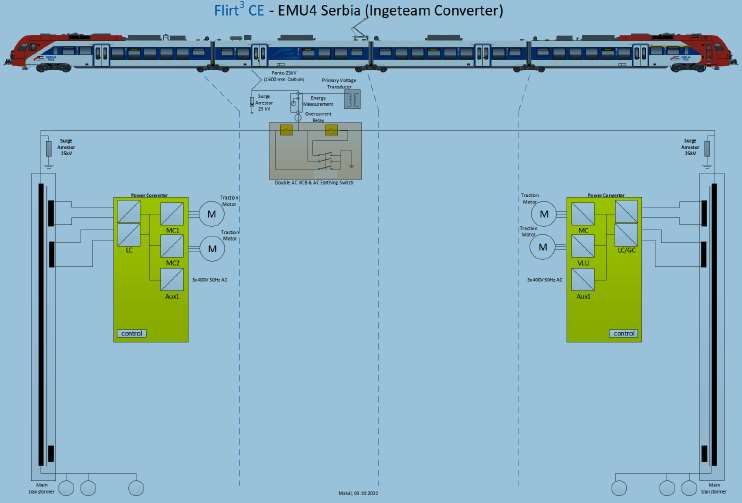Traffic-based methodology to develop peak Heat Release Rate probability distributions for sizing road tunnels ventilation systems when using a probabilistic approach
Abstract
Road tunnels are a crucial part of today’s transport infrastructures worldwide. Among the installed systems, the tunnel ventilation is key, as in the case of fire, it establishes and keeps appropriate conditions for self-evacuation and emergency services operations. Recent works propose using a probabilistic approach to assess road tunnels ventilation systems’ capacity for fire scenarios. Under this approach, key design variables are defined based on probability distributions. From these distributions, the analysis uses the different possible values of the variables, including lower and upper limits as well as mean and characteristic values. The results obtained with this proposed probabilistic approach allow not only designers, but also tunnel operators and administrations, to quantify the reliability of the capacity of the ventilation system, assess its probability of failure, and define safety levels. This paper illustrates a methodology to define the design fire as a probability distribution for sizing road tunnels ventilation systems when applying the above-mentioned probabilistic approach. The methodology uses traffic information (crucial in road tunnels) and correlates it to peak Heat Release Rate (HRR) values from published reports by PIARC to obtain the design fire variable in terms of peak HRR probability distributions. The methodology is applied to two case study tunnels with different characteristics. The obtained results for the two tunnels are then compared and analyzed to peak HRR values normally recommended and used when sizing road tunnels ventilation systems to understand the uncertainty and sensitivity of the results.
References
[1]Steunpunt T. Recommendations for ventilation of traffic tunnels (Dutch). Thieme GrafiMedia Groep; 2005.
[2]Fernández S, Fraile A, Del Rey I, et al. Probabilistic approach for longitudinal ventilation system design in fire situations. In: Proceedings of the 15th International Symposium on Aerodynamics, Ventilation & Fire in Tunnels; 18–20 September 2013; Barcelona, Spain.
[3]Pachera M, Weyenberge BV, Deckers X. Development of a full probabilistic risk model to assess the performance of longitudinal ventilation system for fires in tunnel. In: Proceedings of the Tunnel Safety and Ventilation—9th International Conference; 12–14 June 2018; Graz, Austria.
[4]Fernandez Martin S, del Rey Llorente I, de Lerma AF. Tunnel Ventilation Analysis Using a Probabilistic Approach: Case Study, Fire in Road Tunnels with Longitudinal Ventilation. Fire Technology. 2020; 57.
[5]Fernandez Martin S. Application of Probabilistic Methods for the Optimization of Ventilation Systems in Road Tunnels [PhD thesis]. Polytechnic University of Madrid; 2023.
[6]Ingason H, Li YZ, Lonnermark A. Tunnel Fire Dynamics. Springer; 2015. pp. 1–134.
[7]National Fire Protection Association. NFPA 502, Standard for Road Tunnels, Bridges, and Other Limited Access Highways. National Fire Protection Association; 2017.
[8]PIARC. Design Fire Characteristics for Road Tunnels. PIARC; 2017.
[9]Carvel R, Beard A. The Handbook of Tunnel Fire Safety. Thomas Telford; 2005.
[10]CETU. The Pilot Files, Ventilation (France). Ministère de l’Équipement, des Transports, du Logement, du Tourisme et de la Mer direction des routes; 2003.
[11]RABT. Guidelines for the equipment and operation of road tunnels (German). Research Society for Road and Traffic Engineering; 2006.
[12]NCHRP. Design Fires in Road Tunnels. NCHRP; 2011.
[13]Carvel R. Fire size in tunnels [PhD thesis]. Heriot-Watt University; 2004.
[14]Bouwdienst Rijkswaterstaat. Project ‘Safety Test’: Fire Test Report (Dutch). Bouwdienst Rijkswaterstaat; 2002.
[15]Ingason H. State of the Art of Tunnel Fire Research. Fire Safety Science. 2008; 9.
[16]TRB. Highway Capacity Manual. Transportation Research Board; 2000.
[17]PIARC. Experience with significant incidents in road tunnels. PIARC; 2017.
[18]Hadjisophocleous GV, Mehaffey JR. Fire Scenarios. In: SFPE Handbook of Fire Protection Engineering. Springer; 2016.
[19]Meacham, B. Toward next generation performance-based building regulatory systems. In: Proceedings of SFPE 11th Conference on performance-based codes and fire safety design methods; 23-25 May 2016; Warsaw, Poland.
Copyright (c) 2025 Author(s)

This work is licensed under a Creative Commons Attribution 4.0 International License.





.png)


